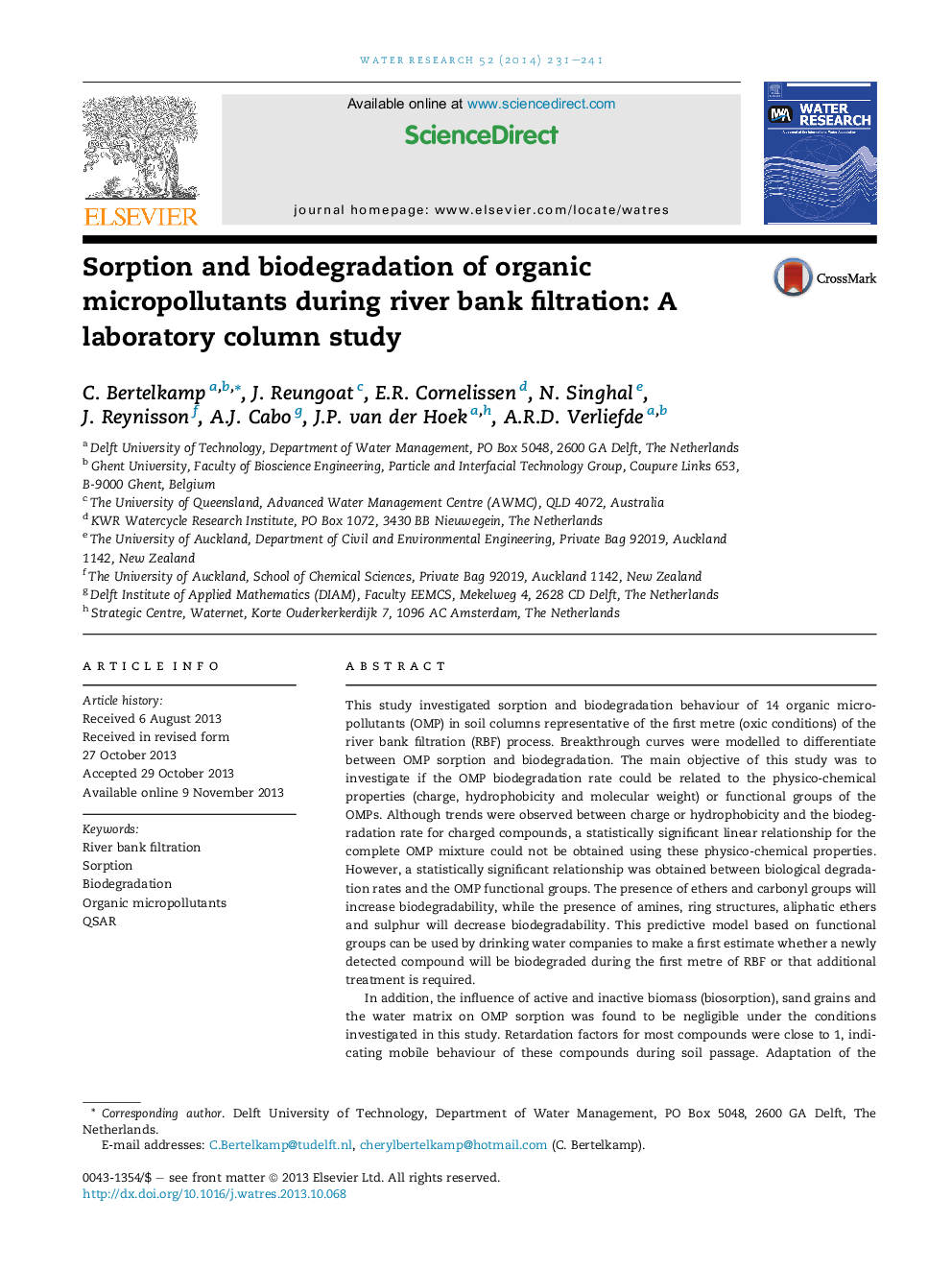| کد مقاله | کد نشریه | سال انتشار | مقاله انگلیسی | نسخه تمام متن |
|---|---|---|---|---|
| 4481678 | 1623116 | 2014 | 11 صفحه PDF | دانلود رایگان |
• Biodegradation rates and retardation factors of 14 OMPs were determined.
• OMP biodegradation rates showed a significant relation with OMP functional groups.
• OMP biodegradation rates did not show a significant relation with charge or MW.
• OMP biodegradation rates did not show a significant relation with hydrophobicity.
• OMP sorption was found to be negligible.
This study investigated sorption and biodegradation behaviour of 14 organic micropollutants (OMP) in soil columns representative of the first metre (oxic conditions) of the river bank filtration (RBF) process. Breakthrough curves were modelled to differentiate between OMP sorption and biodegradation. The main objective of this study was to investigate if the OMP biodegradation rate could be related to the physico-chemical properties (charge, hydrophobicity and molecular weight) or functional groups of the OMPs. Although trends were observed between charge or hydrophobicity and the biodegradation rate for charged compounds, a statistically significant linear relationship for the complete OMP mixture could not be obtained using these physico-chemical properties. However, a statistically significant relationship was obtained between biological degradation rates and the OMP functional groups. The presence of ethers and carbonyl groups will increase biodegradability, while the presence of amines, ring structures, aliphatic ethers and sulphur will decrease biodegradability. This predictive model based on functional groups can be used by drinking water companies to make a first estimate whether a newly detected compound will be biodegraded during the first metre of RBF or that additional treatment is required.In addition, the influence of active and inactive biomass (biosorption), sand grains and the water matrix on OMP sorption was found to be negligible under the conditions investigated in this study. Retardation factors for most compounds were close to 1, indicating mobile behaviour of these compounds during soil passage. Adaptation of the biomass towards the dosed OMPs was not observed for a 6 month period, implying that new developed RBF sites might not be able to biodegrade compounds such as atrazine and sulfamethoxazole in the first few months of operation.
Figure optionsDownload high-quality image (152 K)Download as PowerPoint slide
Journal: Water Research - Volume 52, 1 April 2014, Pages 231–241
